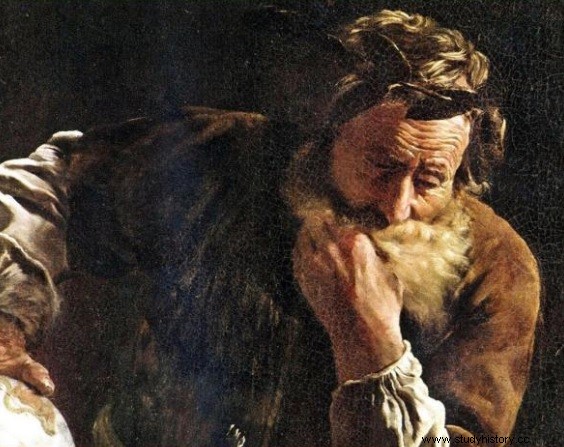 Archimedes (287–212 BC) was a Greek scientist, founder of hydrostatics (study of liquids at rest), and author of works in mechanics and geometry. He is at the origin of the principle that bears his name:“Any body immersed in a fluid undergoes a vertical thrust, directed from bottom to top, equal to the weight of the displaced fluid”. Popular legend has it that he made this discovery in his bath and then rushed naked into the street shouting “Eureka! Eureka! (“I found it!”).
Archimedes (287–212 BC) was a Greek scientist, founder of hydrostatics (study of liquids at rest), and author of works in mechanics and geometry. He is at the origin of the principle that bears his name:“Any body immersed in a fluid undergoes a vertical thrust, directed from bottom to top, equal to the weight of the displaced fluid”. Popular legend has it that he made this discovery in his bath and then rushed naked into the street shouting “Eureka! Eureka! (“I found it!”).
Origin and work of Archimedes
Archimedes was born around 287 BC. AD in Syracuse, the capital of Magna Graecia. Coming from a wealthy family, he would have studied in Alexandria, the scientific center of the time. In Egypt, he is said to have developed his auger, which was used to raise water for irrigation or pumping purposes. A system that still finds applications today in the polders of the Netherlands, heart surgery or even nuclear power plants.
 More than a talented engineer, Archimedes was an outstanding mathematician and physicist to whom we owe, among other , the approximation of pi, the principle of buoyancy or the infinitesimal calculus.
More than a talented engineer, Archimedes was an outstanding mathematician and physicist to whom we owe, among other , the approximation of pi, the principle of buoyancy or the infinitesimal calculus.
In physics, Archimedes demonstrates the law of the lever (two bodies balance each other at distances inversely proportional to their weight) and discovers the fundamental concept of the center of gravity.
In mathematics, he perfected the Greek system of writing numbers (or numeration). He claims to be able to count the number of grains of sand that the Universe could contain with his notation system for large numbers, whereas the Greek tradition attributes such knowledge to the gods or their interpreters alone.
Legend and influence of Archimedes
After Archimedes died in 212 BC during the siege of Syracuse (his hometown) by the Romans, historians compared him to the heroes of mythology. According to legend, he indeed stood up to the Roman army for three years thanks to the development of new war machines:gigantic catapults, or "burning mirrors" intended to ignite enemy vessels.
His discoveries in geometry and mathematical physics had a great influence until the 17th century by their content, but also because they led to reflection on theoretical questions (notion demonstration). This great mechanic is also credited with the invention of the endless screw, the mobile pulley, and the gear.
His writings, letters addressed to colleagues, testify to his influence. Copied, translated into Arabic and then into Latin, they have traveled across the world and through time, forming a long chain of transmission of knowledge. In the 6th century, in Constantinople, the architects of Hagia Sophia were inspired by it, like Leonardo da Vinci in the Renaissance. The most incredible thing about Archimedes is that even the improbable inventions attributed to him have had a posterity. The principle of the burning mirrors thanks to which he would have set fire to a Roman fleet is at the origin of the solar ovens that we know today.
To go further
- L'Arénaire, by Archimedes. CIPP, 2017.
- Thales, Pythagoras, Euclid, Archimedes, by Stéphane Favre-Bulle. Ellipses, 2004.
